Starting in 2010, Wizards of the Coast began producing special Commander sets. The project was certainly ambitious, and the intention from the beginning was to make each collection of decks thematically diverse. A decade later, I have been revisiting the yearly Commander releases to consider their historical and contemporary performance. Check out my examinations of the first three sets, Revisiting Commander 2011, Revisiting Commander 2013, and Revisiting Commander 2014.
Today, we will be evaluating each of the legendary creatures that premiered in Commander 2015 and looking at the impacts they made on Commander. This was the introduction of Experience Counters, a topic I will be tackling head on at the end of the article. I will be basing my analysis on the reception these generals received at the time, how they created or supported an archetype, and answer if they maintained any sustained usage. To maintain some structure, we’ll group each duo of new commanders into the decks they premiered in.
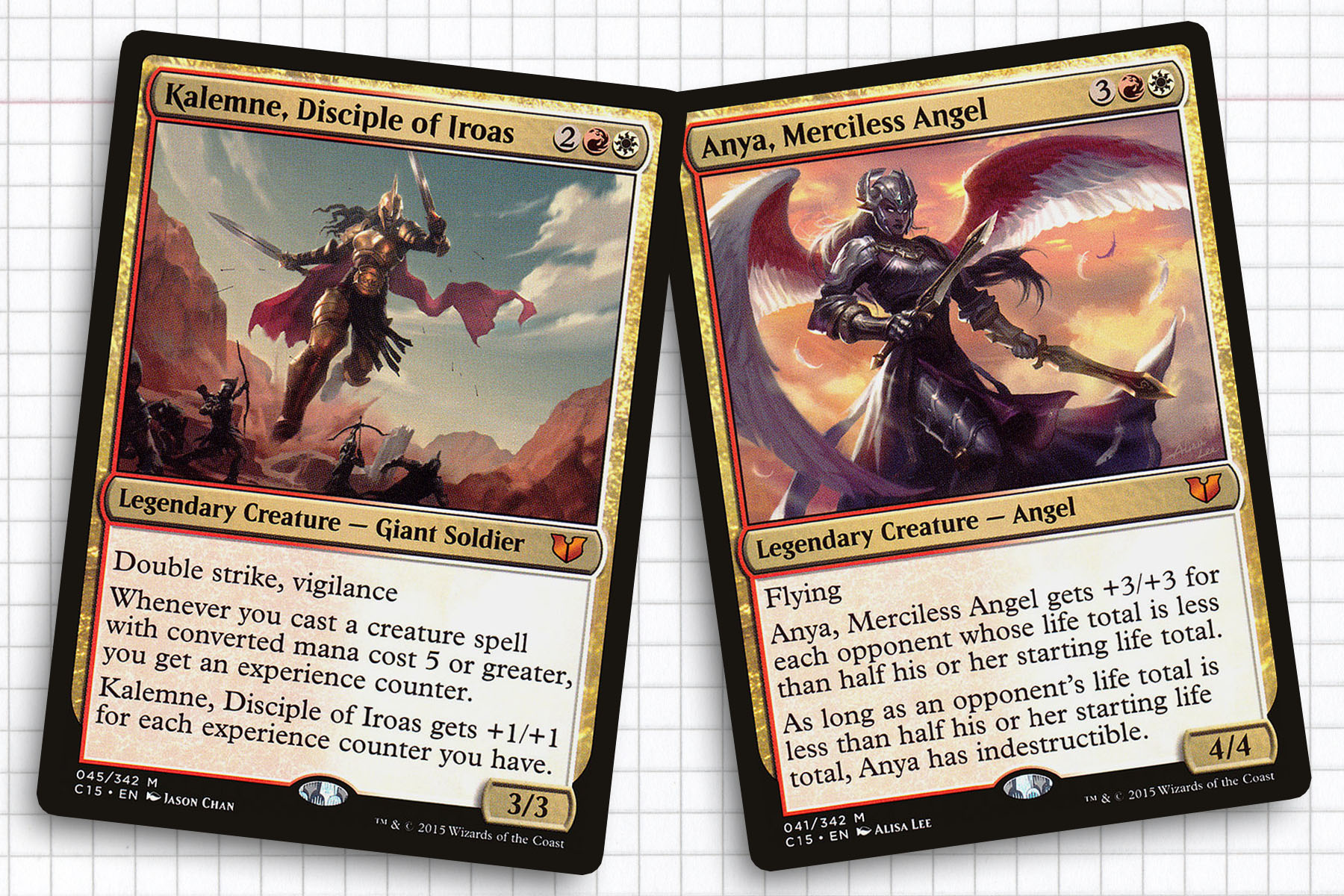
Wade into Battle
It’s always interesting looking at the generals coming out of Commander products to see how they fare against the format from a historical context. Kalemne, Disciple of Iroas feels like a relic of a different time, designed for a format that used larger spells. At the time, I remember people talking about Kalemne as a proper giant tribal card—and in all fairness, that application of Kalemne has worked to some success. But big creatures have been on the decline lately, which is probably why Kalemne has fallen to 14th place for Boros generals. Since the printing of Feather, the Redeemed, the color identity has moved a lot lower to the ground and the strides made by Strixhaven have given it a facelift. A double strike creature that gets bigger from playing five-mana value spells doesn’t really have a place at the table right now.
Continuing the low impact of these Boros generals, Anya, Merciless Angel falls outside of top 20 generals for their color identity and it feels fitting. Unlike every other legendary creature in this bunch, I don’t know if I could have described the general idea of what this card did before looking it up for my research. To Anya’s credit, she did open up the punisher decks that normally were lead by Zo-Zu the Punisher or Kaervek the Merciless by including White. But the Commander set didn’t give us any White or Boros spells that made halving life possible and Scytheclaw was in a different preconstructed deck. So if you were intrigued by what Anya was doing, you were better off retrofitting Kaalia of the Vast for this niche.
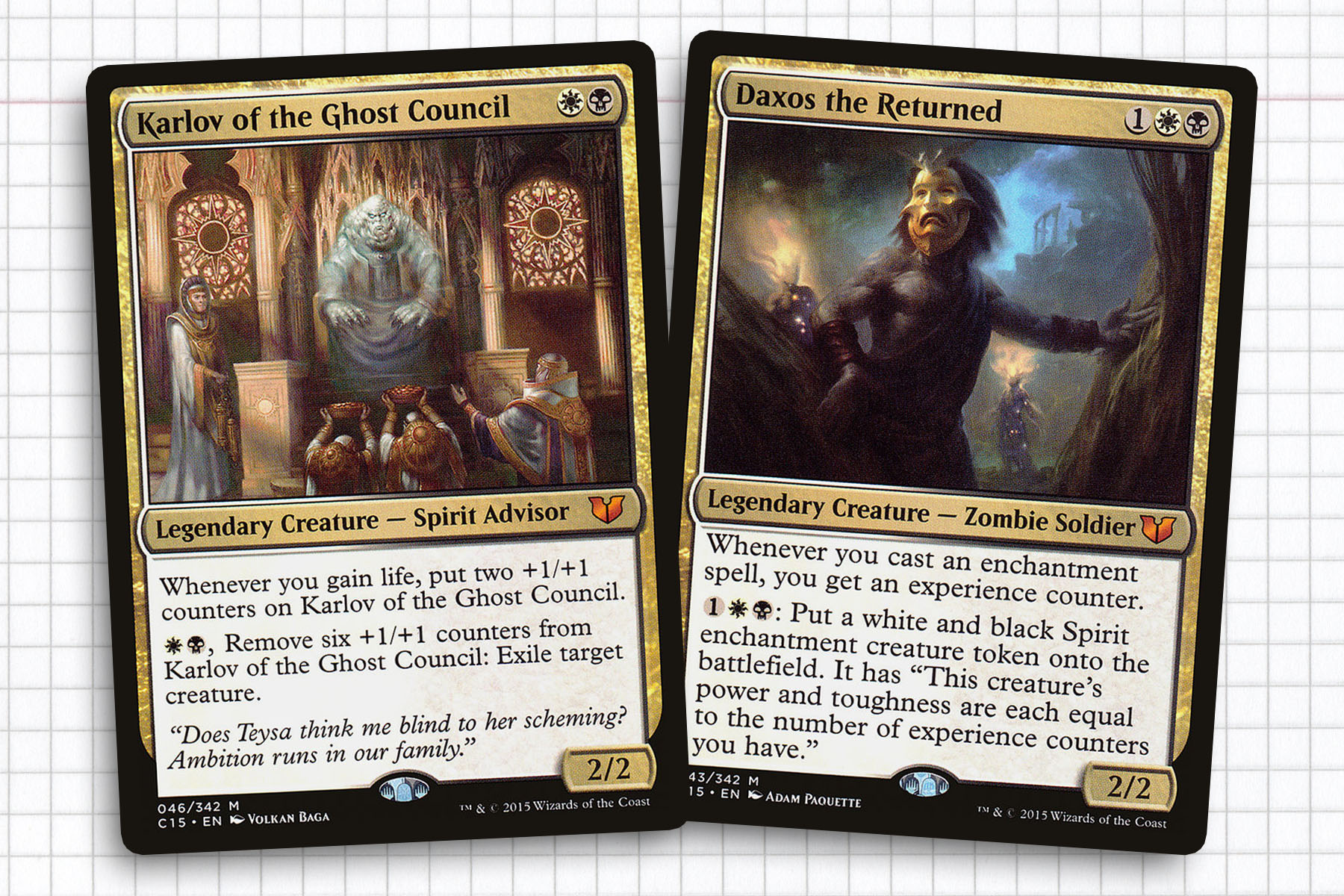
Call the Spirits
Daxos the Returned is an interesting card to me, as enchantress is not something that is normally seen within the Orzhov color identity, and was an admirable attempt to make space for the archetype to take hold. Daxos was never especially popular, the character generating more hype than the mechanics of the card, as Daxos’ death in the larger story had only happened about 18 months prior.
His ability to gain experience counters reads like jumping through a lot of hoops, but in my experience, can generally reach a level worth all the effort pretty quickly. I think the real downfall is that it could do so much more in a different color combination: blue would allow you to create tokens while under a Standstill, while green would allow for a more recognizable enchantress build. Regardless of all of that, Daxos the Returned has maintained a tenth place spot amongst Black/White generals, which I would attest to the uniqueness of the card.
Of the cards being discussed today, Karlov of the Ghost Council saw the most personal use. As someone who had already developed a Doran, the Siege Tower lifegain deck by the time Commander 2015 saw print, Karlov was an easy include and still in the deck as a strong battlecruiser creature that also acts as removal. If the deck wasn’t a known quantity when Karlov was printed, I don’t know that they would have made the same impact, but I certainly think the card is a hidden gem.
As a general, Karlov has remained pretty popular as well, currently sitting at the fourth most popular general for their color identity. I credit this to the fact that Karlov was built with the stats of a powerful contemporary general, coming down early and making an impact over the course of the game. Being cast regularly on turn two means that if you have the ability to grant him lifelink and trample, he can take over games, possibly not having to use up +1/+1 counters until he’s already taken a player out from commander damage. Karlov didn’t create a sustained archetype, but they were able to turn lifegain, an accepted perk stapled onto cards like Oust or Wingmate Roc, into a path to victory in Commander.
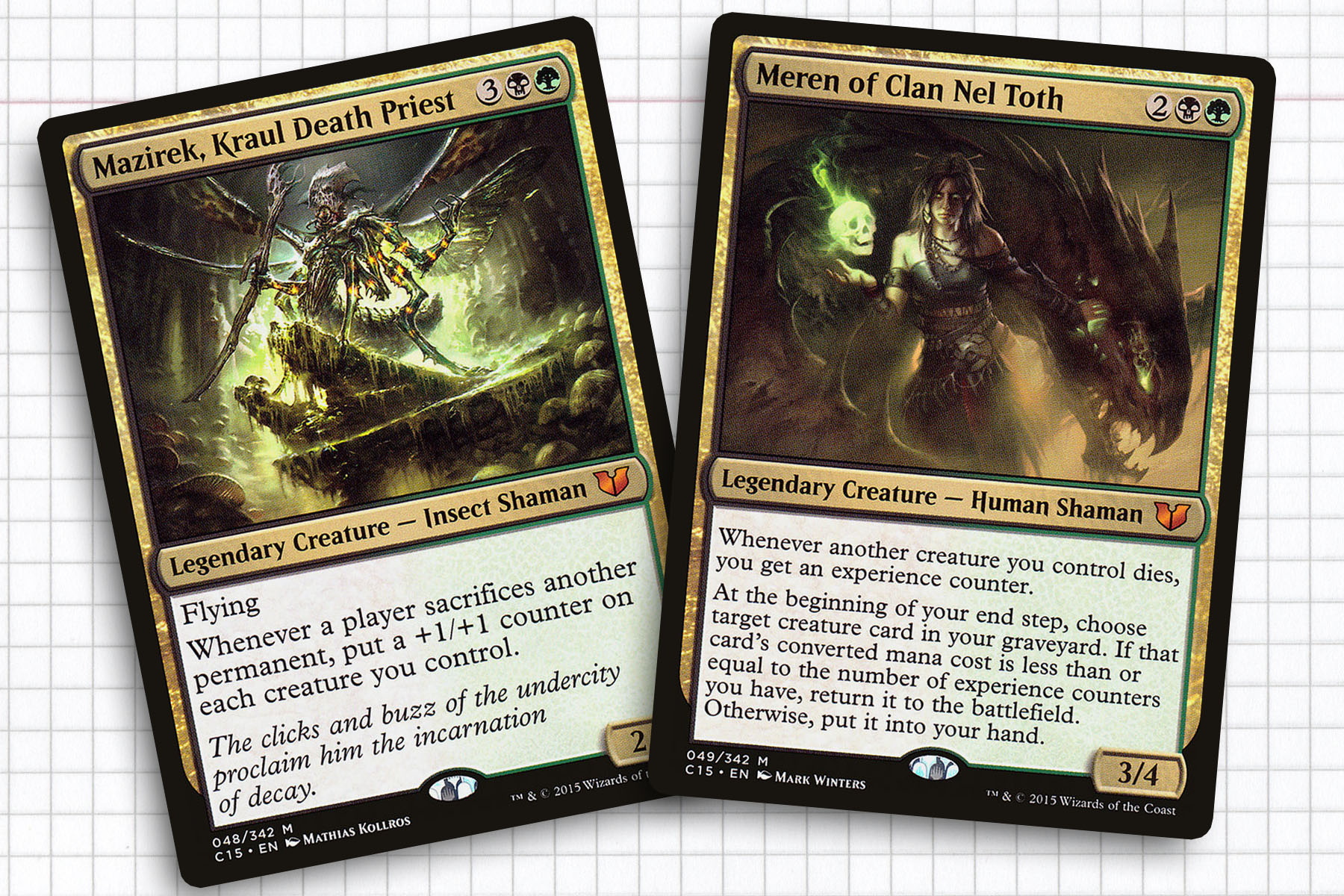
Plunder the Graves
Cutting to the chase, Meren of Clan Nel Toth is most popular golgari general, and there’s no question why. In a format that prizes value so much, Meren is one of the best reanimation generals bar none. What can become a little debilitating is that there’s really no way to interact with this besides completely emptying out a graveyard over and over. While this is something that every Commander deck should be prepared to do, completely invalidating what a deck is trying to do is in its own right creating a non-fun experience for at least one party.
Meren made an impact on the format immediately, with a lot of valid hype. Previously, the kinds of reanimation decks I recall focused more on larger creatures like dragons or the occasional Lord of Extinction. This was the first time I remember Mill, Aristocrats, and Reanimator overlapping so perfectly. Ultimately, while I have not played against a deck led by her in awhile, in certain circles she is an ever-present threat. She can be annoying, but I respect what she’s trying to do, because she does it well.
By comparison to a lot of the other generals in this list, Mazirek, Kraul Death Priest is a relatively straightforward design. For a long time, the deck had a consistent presence in the format, something you didn’t have a tool hidden away in your deck to specifically answer, but that you saw enough that you wondered why you hadn’t gotten a copy of Angel of Jubilation, Sigarda, Host of Herons, or Tajuru Preserver when you had the chance.
The decline of the deck started with The Gitrog Monster. Both existed fairly well as they don’t explicitly overlap, but Gitrog was just more popular and slowly Mazirek simply became a fixture of its deck. The real nail in the coffin was Korvold, Fae-Cursed King, whose popularity is beyond me, to be honest. This leaves Mazirek in sixteenth place among its color identity, which seems about right. She’s a very solid card in the main deck though.
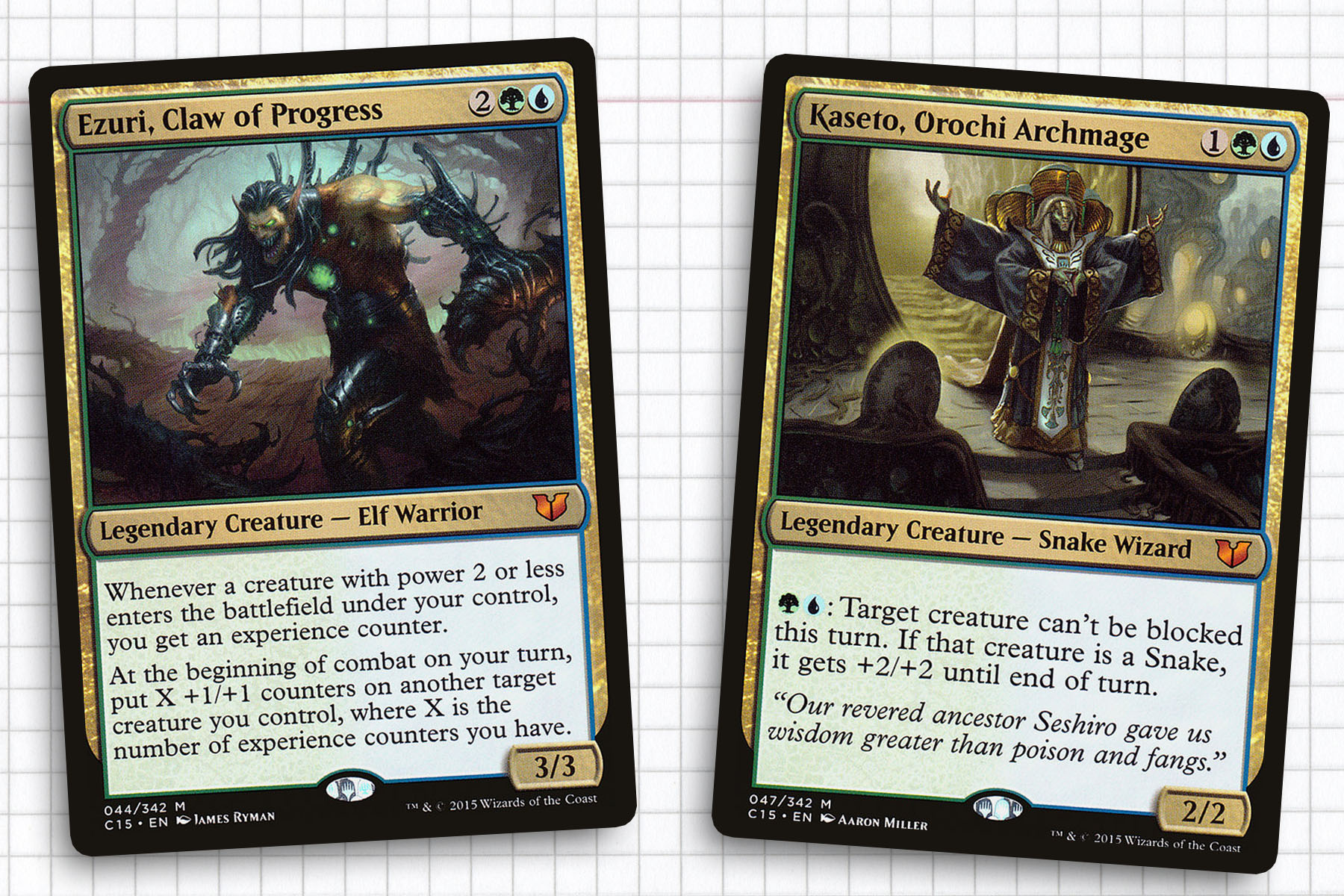
Swell the Host
Ezuri, Claw of Progress was a popular general at the time of his printing and has remained a fairly popular option as time has gone on. My only gripe with the deck was that it found an optimal build of small creatures whose abilities scale with their bodies and it hasn’t really needed to innovate beyond that, besides the addition of The Ozolith and The Great Henge. Ezuri currently lands at fifth most popular general for their color identity and the best thing he has going for him at this point is that the deck he wants built around him is unique from the decks around him. In all honesty, I do expect that he is poised to fall even further as the list of powerful Simic generals seeing print expands every few months.
Kaseto, Orochi Archmage, in my mind, is a solid example of what I believe we are currently missing in a Commander product cycle where the decks are tied to the Standard-legal product. I would personally love to see more representatives from forgotten planes like Kamigawa, and supporting a tribe in a color that didn’t get support within the block. Since we won’t have a Commander Legends product every year, a place for nods to old characters or planes is underserved right now.
From a historical standpoint, Kasteo was never that impactful. I know a few players who enjoyed the tribal aspect and some that tried to be tricky with the unblockable application. But when my research into the current state of Kaseto found them as the eighteenth most popular Simic general, it wasn’t too surprising. The deck pretty much builds itself; to its credit, it’s a place for Coiling Oracle and Patagia Viper to see play. But the last few years of set releases have not given it much of note to inspire innovation in the deck. Kamigawa snakes are interesting as a race and with additional support, could be an archetype to build a niche in; but at this point, I’m fine leaving this one to history.
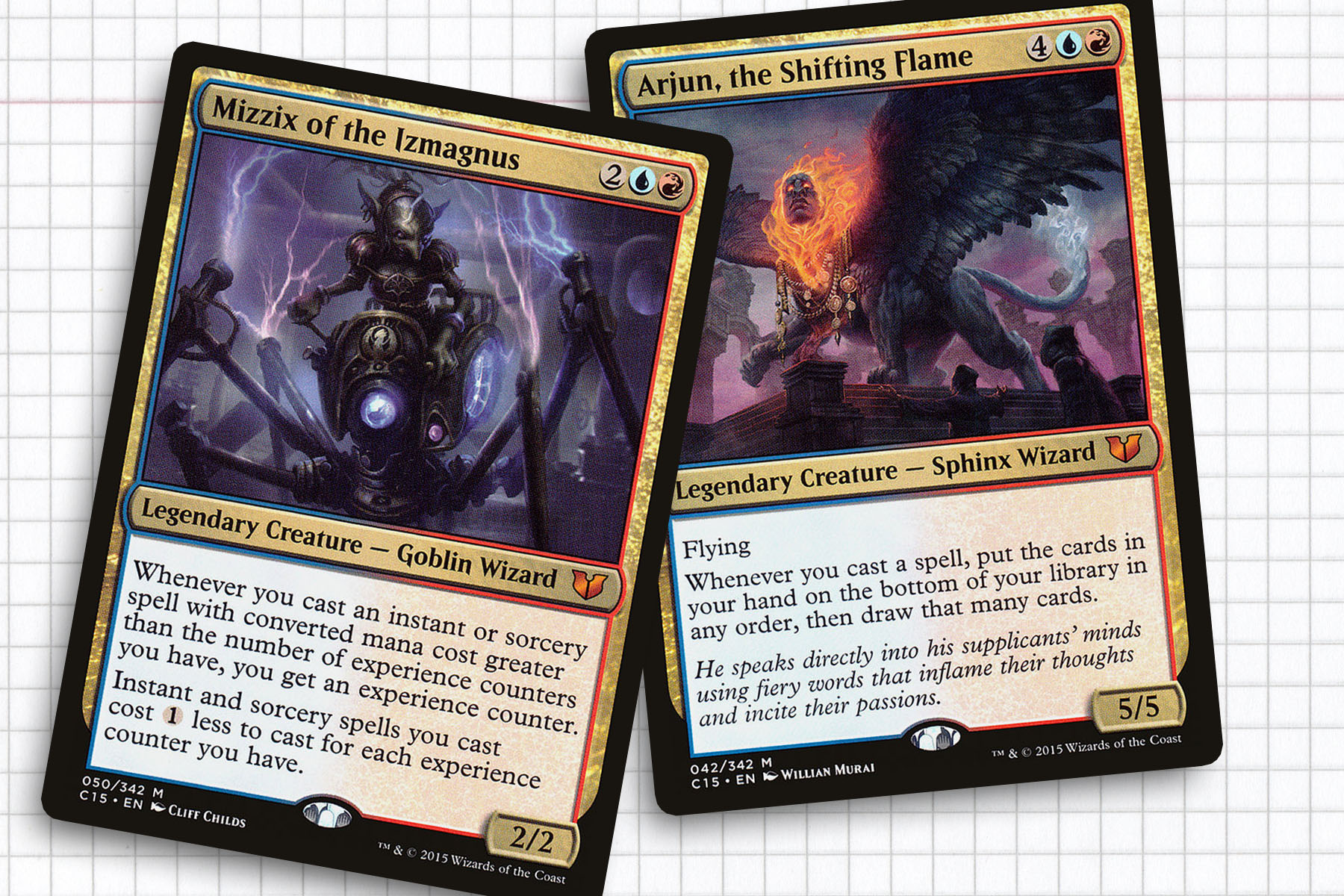
Seize Control
Finally, we have Mizzix of the Izmagnus who was hyped immediately, now the fifth most popular general for her color identity. But Izzet is diverse, so in terms of the archetype she represents, I don’t see her losing her place as the “spells matter” general of choice. My instincts said that she didn’t outright solidify this archetype, but in looking through the generals that predate her, only Jeleva, Nephalia’s Scourge and Melek, Izzet Paragon stand out as leaders of spellslinger decks. Despite being very powerful, she was needed.
Of the five experience counter generals on display this week, Mizzix of the Izmagnus might be the most broken and still be the best design. This dichotomy comes from the fact that Mizzix makes instants and sorceries ridiculously cheap, while also making you work for it. On the low end of the scale, Kalemne wants you to cast big creature spells to make one big general, Daxos asks you to cast enchantments, then pay three mana per token. On the high end, Ezuri could just spam Sprout Swarm and create a 10/10 Blighted Agent, and Meren just needs an Altar of Dementia and Avenger of Zendikar to acquire enough experience counters to reanimate any creature going forward. With Mizzix, the curve could go on forever, but relative curving out is a requirement.
Mindmoil has been a pet card of mine since 2006, easily making Arjun, the Shifting Flame my favorite deck I’ve built that I don’t still have assembled. Ultimately, his popularity might have been entirely personal affection as Arjun was overshadowed by Mizzix. Unfortunately, Arjun has fallen outside of the top 20 Izzet generals. Once The Locust God came into the picture, as a win condition instead of being the draw engine, I imagine it was easier for Wheel of Fortune decks to eclipse what Arjun was looking to do. Ultimately, my copies of Teferi’s Puzzle Box and Psychosis Crawler were retired, as the deck fell out of regular use.
It’s About the Experience
I wanted to give each of the experience counter generals a fair shake, evaluating them in terms of their power level and their effect on the format without necessarily digging into anything that I might find broken about the mechanic. But I would like to close out by talking a little bit about why I feel that experience counters in 2015 may have been ill-advised. I wish that more had been done to create some way to wipe the slate clean without player removal. A proto-version of Suncleanser or a new Hex Parasite could have been appropriate here, to take a player back down to zero experience counters. These generals basically never lost momentum, and in my eyes created an environment where a deck that wasn’t ready to counteract Meren, Ezuri, and Mizzix felt invalid.
On the bright side, several of these generals did create archetypes that I think players wanted to exist within Commander. And to the design team’s credit, these were not generically powerful effects that worked in every Orzhov or Izzet good stuff deck; these were specific effects that made one archetype exceptionally good within that color identity. The real victims of this product were the secondary generals, overshadowed by the marquee generals and lacking the support within their respective decks to make them valid replacements straight out of the box. I’m happy to see the growth Boros/Lorehold has had in the last seven years, but I’m also happy that so many of the generals in the product had the staying power to remain popular within their color identity.
When I return to this series, we will be taking on what many consider to be the gold standard of Commander products, with the introduction of the partner mechanic and the four color generals. Until next time, thanks for reading.
Ryan Sainio is a Graphic Designer who writes about EDH and the EDH community. He has been playing Magic: the Gathering since 7th Edition in 2002 and values flavorful and fun gameplay over competitively optimized decks.

